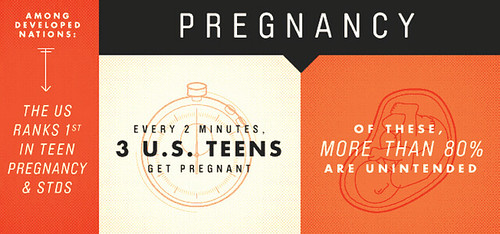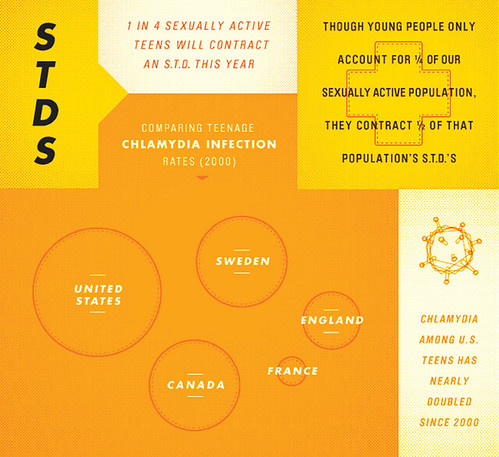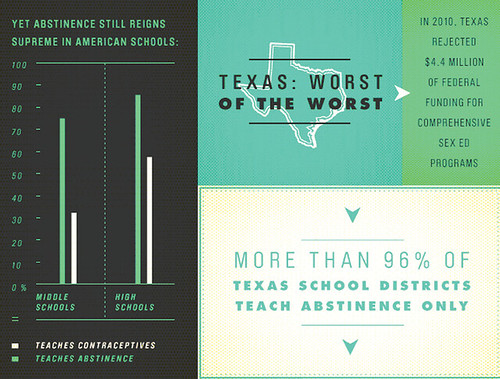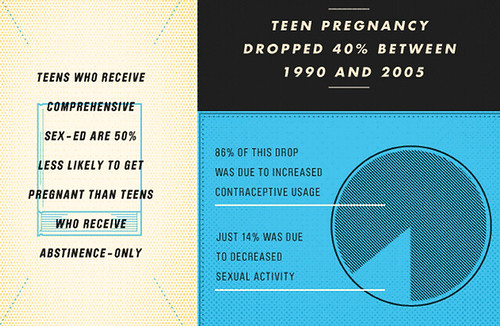



 87 percent of schools teach sexual education with a focus on abstinence and one in four teens receive abstinence education without any accompanying instruction on birth control. The recent news flurry surrounding George Washington High senior Katelyn Campbell, of West Virginia, has brought national media attention to rethink how and what kids are taught across the nation.
87 percent of schools teach sexual education with a focus on abstinence and one in four teens receive abstinence education without any accompanying instruction on birth control. The recent news flurry surrounding George Washington High senior Katelyn Campbell, of West Virginia, has brought national media attention to rethink how and what kids are taught across the nation.
Earlier this month Campbell spoke out against Pam Stenzel, an abstinence advocate and guest speaker at Campbell’s school, who used slut shaming as a way of “educating.”
Stenzel had warned students against taking birth control, saying that if they did their mothers would hate them.
After Campbell spoke out against her school hosting such a speaker, her principal threatened to contact her future college – Wellesley College – and inform them of her “bad character.” Thankfully when Campbell brought the story to the news she was flooded with support including a public statement or approval from Wellesley College. However, many members of her community support the school’s choice of speaker, and see nothing wrong with the principal’s actions.
These views reflect the resistance towards sexual education that came out of the conservative and religious movement of the late 1960s and early 1970s, in response to the sexual revolution of the time. It was then that Sex Ed became a political issue and parents across the country began protesting Sex Ed programs in schools.
Though conservatives often cite Sex Ed as the cause for increasing rates of sexual activity — studies have proven this claim false — Sex Ed began in this country in the early 1900s as a response to increased rates of sexual activity and STDs, and was seen as a mechanism for promoting hygiene rather than morality.
There are schools throughout the country where comprehensive Sex Ed is taught but it is far from the norm, and parents have the option to opt their child out of the program. Comprehensive programs also receive next to no federal funding while the Federal Government has invested more than $1.5 billion dollars in abstinence only programs since 1997. It was only in 2010 that comprehensive programs were eligible to begin receiving federal funding.
It is a wonder why abstinence only education prevails even though study after study proves it to be ineffective in delaying sex or reducing teen pregnancy – teen pregnancy rates are in fact highest in states with abstinence only policies.
Many sociologists agree that there are serious dangers to “protecting” children from sex.
“There is something wrong when political ideology wins out over scientific evidence,” Professor of Sociology Laura Hirshfield said.
Hirshfield, who grew up with reproductive biologists for parents and lived in a liberal community in Maryland where she received comprehensive sex education in middle school, said “it’s dangerous for a generation of kids, who will eventually have sex, to not be education about how to have safe sex.”
“Right now we are not teaching people how to keep themselves safe physically, how to keep themselves safe emotionally, or how the dynamics of consent and communication work,” First-year McAlister Grant said. Grant worked with Professor Hirshfield on a tutorial last semester dealing with Sex Ed across the nation.
Grant feels that these gaps contribute to the rapid spread of STDs as well as high rates of pregnancy and sexual violence among young people. To try and change this, Grant is working with the Safe Place and Rape Crisis Center (SPARCC) to develop a violence prevention education program targeted at young men that can be taught on high school and college campuses.
Though Grant said he became involved because he thinks, “the quality of sex education in the United States is horrible,” and that, “kids are not being taught the realities of sex,” he and many others hope for a better future. Thanks to non-governmental organizations such as SPARCC and Planned Parenthood, Obama’s support of comprehensive education, and even websites like Tumblr, more kids across the U.S. are learning the realities of sex. Time to wait for legislation and public opinion to follow the logic of science.
Information for this article was taken from wsaz.com, advocatesforyouth.org, guttmacher.org, and dosomething.org.
